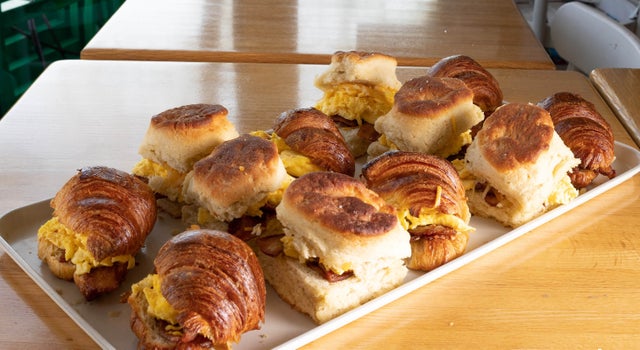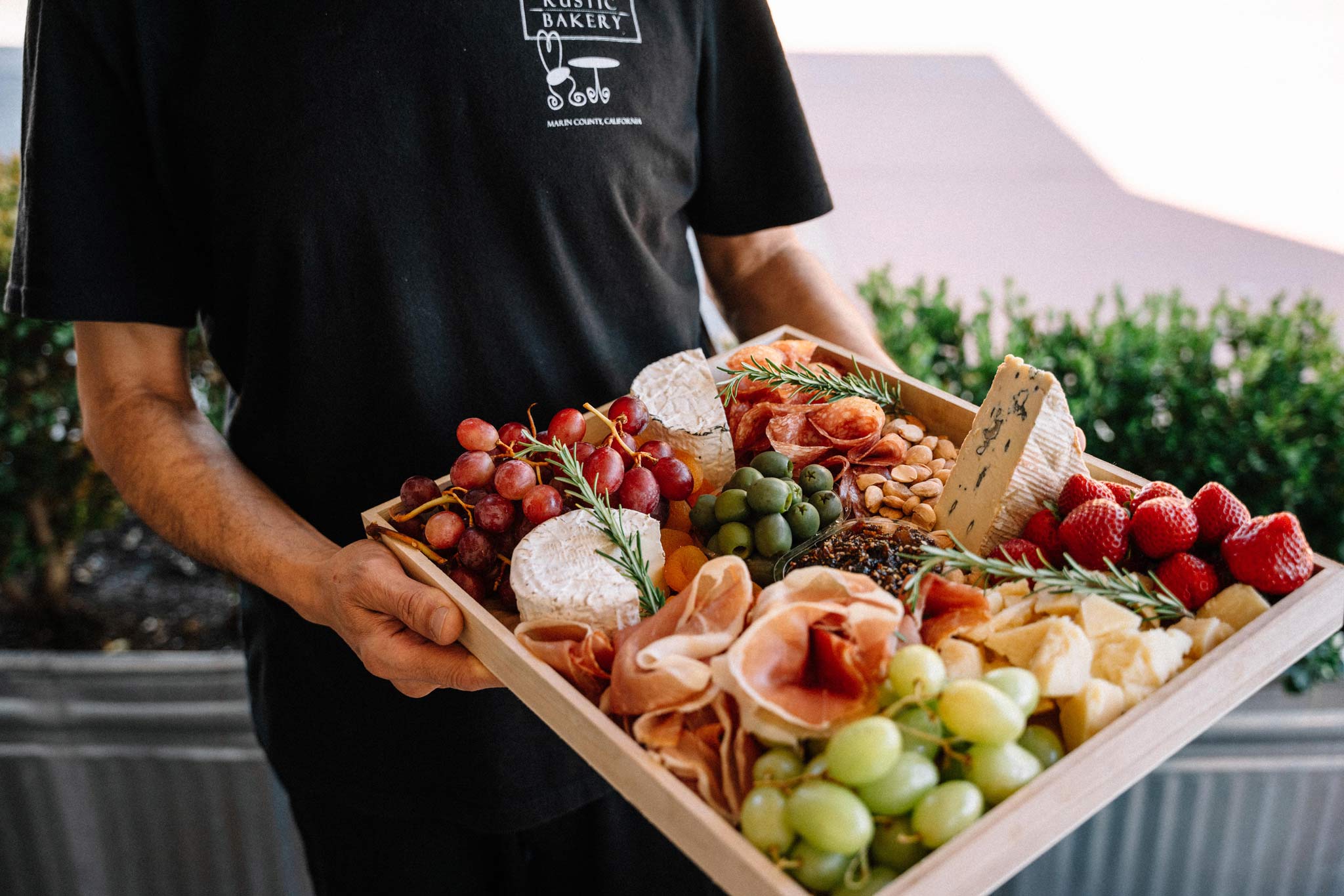Make Your Event Special with Birthday Catering Maddington
Make Your Event Special with Birthday Catering Maddington
Blog Article
Understanding the Art of Bakery Products: From Freshly Baked Breads to Tempting Pastries and Finger Foods
The complex art of bakery products incorporates a spectrum of strategies and components that transform basic elements right into cooking delights. From the science behind the best loaf of bread, where fermentation and gluten advancement play crucial functions, to the skill required for creating layered pastries, each aspect exposes an engaging narrative of craftsmanship. The convenience of finger foods highlights how taste and appearance can be artfully integrated to engage diverse preference preferences. As we check out these components, one might ask yourself: what underlying principles regulate the success of these precious productions?
The Science of Bread Making
At the heart of every loaf of bread exists an interesting interplay of chemistry and biology. The procedure of bread making starts with the mix of flour, water, yeast, and salt-- each active ingredient playing a vital duty in the final product.
Yeast, a living microorganism, ferments the sugars present in the flour, creating co2 and alcohol at the same time. The co2 gas develops bubbles in the dough, causing it to increase and establish a light structure. The temperature level and humidity during fermentation considerably affect yeast task and, as a result, the bread's flavor and appearance.

Learning Bread Strategies
Just how can one accomplish the fragile equilibrium of structure and flavor that specifies outstanding bread? Understanding bread strategies needs a deep understanding of active ingredients, approaches, and the science behind them. Basic to this craft is the choice of high-grade active ingredients-- flour, butter, sugar, and eggs-- each playing an important role in the final item's flavor and texture.
The method of lamination, which includes folding layers of dough and butter, produces the desired flakiness in breads like croissants and smoke pastry. Precision in temperature is essential, as butter ought to stay chilly to make sure ideal layers. Similarly, correct blending techniques, such as the creaming strategy for cakes, make sure also unification of air and fat, resulting in a light and ventilated crumb.
In addition, maintaining the ideal humidity degrees during cooking can dramatically influence the end result, ensuring that pastries climb properly and attain that golden-brown finish. Ultimately, the art of bread additionally requires persistence and method; each attempt improves one's ability and understanding of the complex equilibrium needed to create tempting pastries that delight the senses. Proficiency in these techniques ultimately distinguishes a skilled pastry chef from an amateur.
Kinds Of Finger Foods
The globe of culinary thrills extends beyond pastries to encompass a vast array of finger foods, which are celebrated for their benefit and versatility. These bite-sized treats are ideal for celebrations, using a variety of tastes and appearances that accommodate varied palates.

On the sweeter side, small tarts and click over here now bite-sized cupcakes use a delightful coating to any dish, appealing to those with a pleasant tooth. Cheese and charcuterie boards offer as a sophisticated selection, allowing guests to personalize their attacks with an assortment of meats, nuts, fruits, and cheeses.
Taste Profiles in Baking
Cooking is a detailed dance of taste profiles that integrates wonderful, full-flavored, and umami notes to create a harmonious experience for the taste. Understanding these profiles is crucial for bakers looking for to elevate their creations.
Sweetness commonly works as the foundation in baked products, with sugars, fruits, and natural sweeteners boosting taste depth. Ingredients such as chocolate and sugar introduce complex pleasant notes that can either control or match other tastes. On the other hand, tasty elements, usually located in pastries and breads, give equilibrium and contrast. Active ingredients like cheeses, natural herbs, and flavors can change an easy dough right into a multifaceted flavor experience.
Umami, frequently ignored in baking, plays a considerable duty in enhancing tastes. Ingredients such as aged cheeses, fermented items, and even certain nuts add to a savory deepness that boosts overall preference.
In addition, the interplay of acidity from active ingredients like buttermilk or citrus zest can check my reference brighten tastes, offering a rejuvenating counterpoint to sweet taste. By thoughtfully integrating these taste accounts, bakers can craft items that resonate with diverse tastes buds, developing a memorable culinary experience. Inevitably, understanding flavor profiles is essential to technology on the planet of baking.
Vital Cooking Devices and Active Ingredients
Understanding flavor profiles in baking collections the phase for picking the right devices and ingredients that promote the creation of phenomenal baked goods. The foundation of successful baking lies in having important tools at hand. Secret products include mixing bowls, determining cups, and spoons for precision, as well as a durable stand mixer or hand mixer for simple and easy blending. A reputable set of baking pans-- such as sheet pans, loaf frying pans, and cake frying pans-- is critical for attaining wanted structures and shapes.
Flour serves as the backbone of many recipes; picking the ideal kind-- be it all-purpose, bread, or bread flour-- can substantially impact the outcome. Baking powder and cooking soda are vital for creating lift in cakes and breads.
Furthermore, including flavor enhancers like vanilla extract, seasonings, and citrus zest can raise your productions. By guaranteeing accessibility to these fundamental devices and ingredients, bakers can confidently start their cooking journey, crafting a diverse variety of fascinating baked goods.
Final Thought
Finally, the art of bakery products includes an extensive understanding of both imaginative techniques and scientific principles. Mastery in bread making, pastry prep work, check that and finger food discussion exposes the detailed relationships between components and processes. Moreover, discovering varied taste accounts improves the baking experience, while essential tools and ingredients provide the foundation for success. Ultimately, the enchanting globe of cooking grows on the unified interaction of scientific research and imagination, leading to a myriad of wonderful culinary creations.
How can one attain the delicate balance of appearance and taste that defines extraordinary pastry? Basic to this craft is the choice of premium ingredients-- flour, butter, sugar, and eggs-- each playing a critical duty in the final item's flavor and texture.

Understanding flavor profiles in baking collections the stage for picking the right devices and ingredients that help with the development of phenomenal baked items. Discovering varied taste accounts improves the baking experience, while crucial devices and active ingredients give the foundation for success.
Report this page